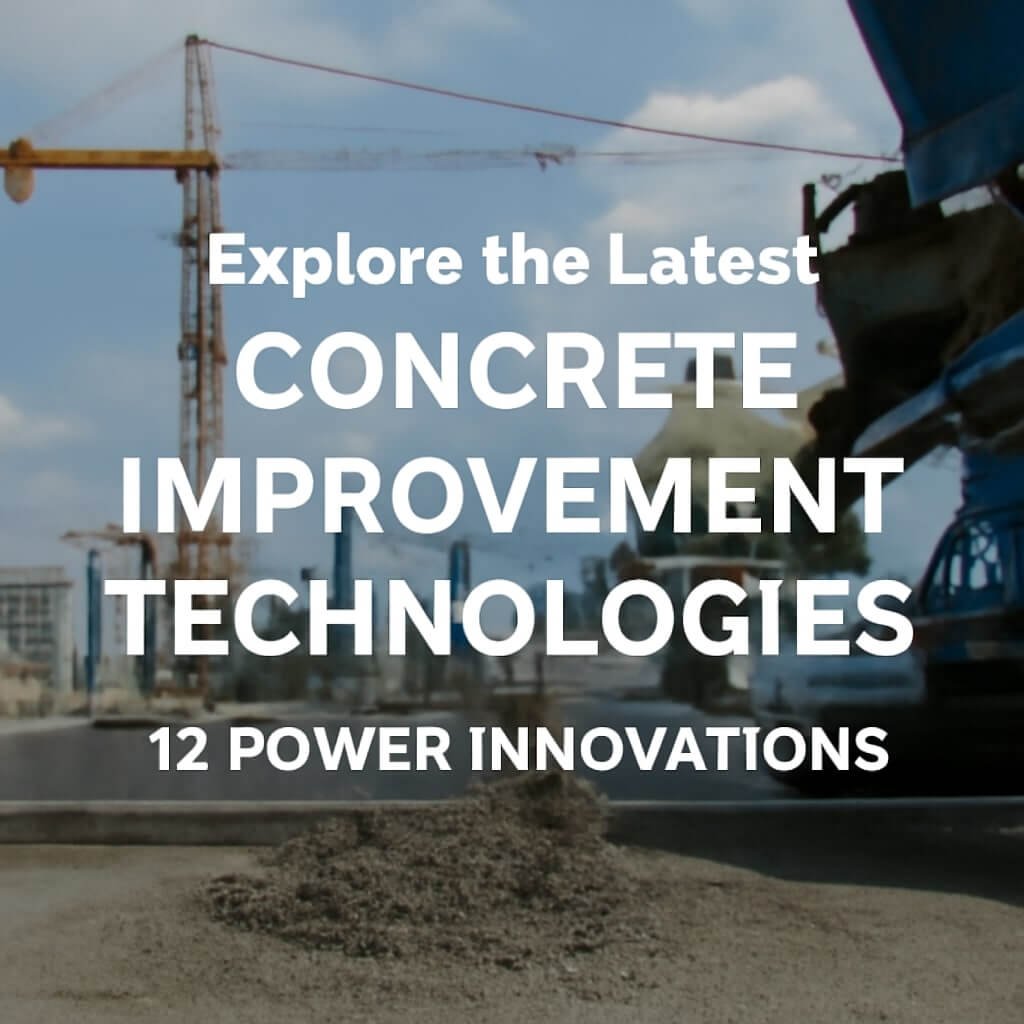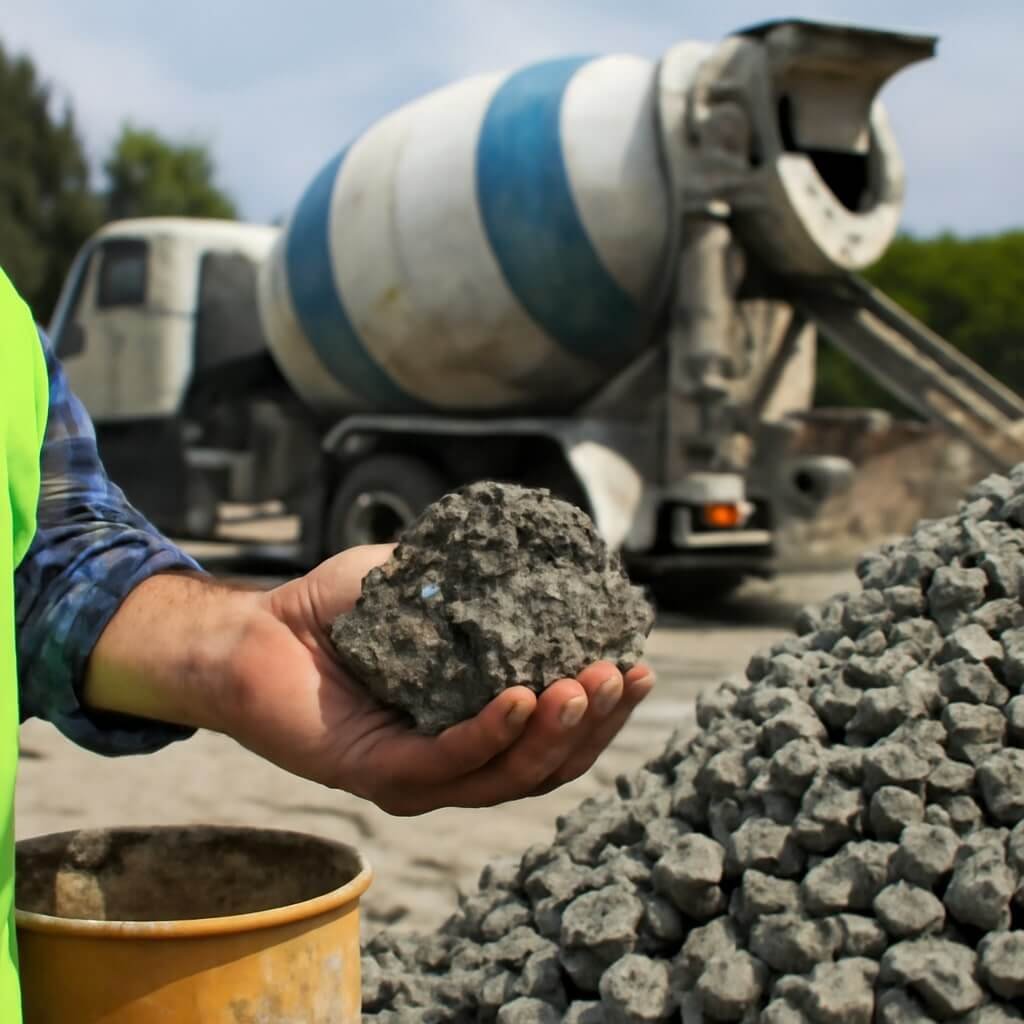Concrete is arguably one of the most vital construction materials globally, forming the backbone of infrastructure from roads to skyscrapers. However, as construction demands evolve, so does the need for better, more durable, and sustainable concrete technologies. This article explores the latest concrete improvement technologies—12 power innovations that are reshaping the future of concrete in construction and engineering.
Introduction to Concrete Improvement Technologies

Concrete improvement technologies refer to advanced methods, materials, and innovations designed to enhance the performance, durability, and sustainability of concrete structures. Over the ye ars, conventional concrete has faced challenges like cracking, environmental impact, and limited lifespan. Innovations in concrete technology address these issues, offering smarter, stronger, and more eco-friendly solutions. Understanding these advancements is critical for engineers, architects, and construction professionals aiming to build resilient infrastructure.
Understanding Concrete: Basics and Challenges
Concrete is a composite material primarily made of cement, water, aggregates (sand, gravel), and sometimes additives. Despite its popularity due to affordability and strength, concrete faces inherent challenges:
- Cracking and Shrinkage: Often caused by drying or temperature changes.
- Durability Issues: Exposure to chemicals, freeze-thaw cycles, and corrosion risks.
- Environmental Impact: Cement production is carbon-intensive, contributing significantly to greenhouse gas emissions.
These challenges drive the need for continual improvements in concrete technology, pushing research into materials that can self-heal, resist damage, or reduce carbon footprints.
Why Invest in Concrete Improvement Technologies?
Investing in advanced concrete technologies offers multiple benefits:
- Increased Durability: Longer lifespan means less maintenance and repair costs.
- Sustainability: Eco-friendly alternatives reduce carbon emissions and waste.
- Cost Efficiency: Though some technologies have higher upfront costs, they save money long-term.
- Enhanced Safety: Improved materials withstand extreme weather and natural disasters better.
- Innovation Edge: Adopting cutting-edge concrete can elevate project quality and reputation.
Given the global infrastructure needs and environmental concerns, these innovations are not just advantageous—they are essential.
1. Self-Healing Concrete: The Future of Durability
Self-healing concrete is a breakthrough technology that can repair its own cracks autonomously, mimicking biological healing processes. It incorporates healing agents like bacteria or encapsulated chemicals that activate when cracks form, sealing gaps and preventing further damage.
Mechanisms Behind Self-Healing Concrete
- Biological Approach: Bacteria spores embedded in concrete produce calcium carbonate when exposed to moisture and air, filling cracks.
- Chemical Approach: Microcapsules release healing agents upon crack formation.
- Mechanical Approach: Use of shape-memory materials that close cracks physically.
This innovation drastically reduces maintenance needs and extends the structure’s lifespan, ideal for bridges, tunnels, and high-stress environments.
2. Ultra-High Performance Concrete (UHPC)
Ultra-High Performance Concrete offers exceptional strength (over 150 MPa), durability, and ductility. UHPC is made with fine powders, superplasticizers, and fiber reinforcement, resulting in a dense, low-permeability material that resists cracking and abrasion.
Its advantages include:
- Lightweight but incredibly strong.
- Superior resistance to chemicals and weather.
- Longer spans possible in construction, reducing material use.
UHPC is used in landmark bridges, façades, and architectural elements demanding high strength and aesthetic quality.
3. Fibre-Reinforced Concrete: Strength Meets Flexibility

Fibre-reinforced concrete (FRC) integrates fibers such as steel, glass, synthetic, or natural fibers into the concrete mix. These fibers improve tensile strength, crack resistance, and toughness.
Common Fiber Types:
| Fiber Type | Benefits | Typical Applications |
|---|---|---|
| Steel | High strength, impact resistance | Industrial floors, bridges |
| Glass | Corrosion resistance | Architectural elements |
| Synthetic | Lightweight, cost-effective | Pavements, precast structures |
| Natural | Sustainable, biodegradable | Rural constructions |
FRC enhances structural integrity, making it perfect for heavy-duty pavements, slabs, and marine structures.
4. Nanotechnology in Concrete
Nanotechnology uses nanoparticles (like nano-silica, titanium dioxide) to improve concrete properties at a microscopic level. These particles fill voids and enhance bonding, leading to:
- Increased compressive and tensile strength.
- Improved durability and resistance to chemical attacks.
- Self-cleaning and air-purifying surfaces (e.g., titanium dioxide photocatalysis).
Nanotech integration helps concrete last longer in harsh environments while also adding functional benefits.
5. 3D-Printed Concrete: Revolutionising Construction
3D printed concrete uses additive manufacturing to build structures layer by layer directly from digital models. This technology reduces waste, labor costs, and allows for complex shapes previously impossible to cast.
Key Aspects:
- Uses specially formulated concrete mixes optimized for extrusion.
- Enables rapid prototyping and on-site construction.
- Supports sustainable building by reducing material usage.
From affordable housing to innovative architectural designs, 3D printed concrete is pushing the boundaries of construction.
6. Green Concrete: Sustainable Solutions for a Greener Planet
Green concrete focuses on reducing environmental impact by incorporating recycled materials (fly ash, slag), reducing cement content, or using carbon capture techniques.
Benefits include:
- Lower carbon emissions.
- Utilisation of industrial waste.
- Enhanced energy efficiency in production.
Green concrete is vital for sustainable development goals, offering a practical path to eco-friendly infrastructure.
7. Smart Concrete: Integrating Sensors for Real-Time Monitoring
Smart concrete embeds sensors and conductive materials to monitor health and structural integrity in real time. It can detect strain, temperature, humidity, and even cracks.
Advantages:
- Early warning for potential failures.
- Data-driven maintenance reduces costs.
- Enhances safety and longevity.
Smart concrete finds applications in bridges, tunnels, and critical infrastructure where continuous monitoring is essential.
8. Concrete Admixtures: Enhancing Performance and Workability
Admixtures are chemical additives mixed into concrete to modify properties like setting time, strength, and workability.
Common types:
- Plasticisers: Improve flow without extra water.
- Accelerators: Speed up curing.
- Corrosion inhibitors: Protect embedded steel reinforcement.
- Air-entraining agents: Improve freeze-thaw resistance.
They are essential for tailoring concrete to specific environmental and construction needs.
9. Recycled Aggregate Concrete: Eco-Friendly and Cost-Effective
Recycled aggregate concrete (RAC) replaces natural aggregates with crushed concrete from demolition waste. This reduces landfill and conserves natural resources.
Challenges:
- Slightly reduced strength compared to virgin aggregates.
- Quality control needed to avoid impurities.
Despite this, RAC offers a sustainable, budget-friendly alternative for many construction projects.
10. High-Strength Lightweight Concrete
This concrete variant combines high strength with reduced density, achieved by using lightweight aggregates like expanded clay or shale.
Advantages:
- Lower structural load, reducing foundation size.
- Good thermal insulation.
- Easier handling and transport.
Ideal for high-rise buildings, bridges, and precast elements where weight savings are crucial.
11. Transparent Concrete: Aesthetic and Functional Innovation
Transparent concrete uses optical fibers embedded within to allow light transmission while retaining structural strength.
Applications include:
- Architectural features with natural lighting.
- Artistic and decorative installations.
- Energy-efficient building designs.
This innovation blends functionality with aesthetics, opening new creative avenues.
12. Concrete Surface Treatments and Coatings
Surface treatments improve concrete’s resistance to wear, water ingress, and chemical attacks. Common methods:
- Sealants: Prevent moisture penetration.
- Epoxy coatings: Enhance chemical resistance.
- Polishing: Improve aesthetics and durability.
These treatments extend service life and protect investments.
FAQs About Concrete Improvement Technologies
1. What is the lifespan of self-healing concrete?
Self-healing concrete can significantly extend lifespan by repairing microcracks automatically, potentially doubling the structure’s service life depending on conditions.
2. Are ultra-high-performance concretes more expensive?
Yes, UHPC has higher upfront costs due to materials and processing but reduces maintenance and repair expenses over time.
3. How sustainable is green concrete compared to traditional concrete?
Green concrete reduces carbon emissions by up to 30-50%, depending on the materials used, making it substantially more sustainable.
4. Can 3D-printed concrete be used for large-scale structures?
While still emerging, advances are enabling 3D printing for larger structures, especially modular components and customised architectural elements.
5. How do smart concrete sensors survive harsh environments?
Sensors are embedded and protected within concrete, designed to withstand environmental stresses for years without failure.
6. What are the challenges of using recycled aggregate concrete?
Quality variability and slightly reduced strength require careful sourcing and testing to ensure structural integrity.
Conclusion: Embracing Concrete Innovations for a Stronger Future
The future of concrete is bright, powered by innovations that address age-old problems and modern demands alike. From self-healing to smart monitoring, these 12 power technologies are transforming how we build, ensuring structures that are stronger, safer, and more sustainable. Embracing these advancements can lead to cost savings, enhanced performance, and a greener planet.
As infrastructure needs grow, adopting the latest concrete improvement technologies isn’t just smart—it’s essential.



